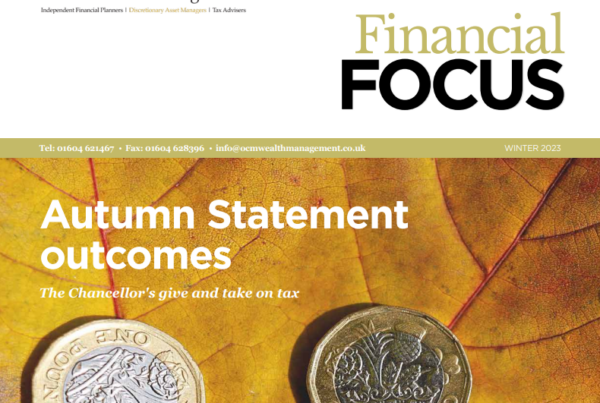Equity markets may be ignoring the economic data, but bond markets don’t lie
As we move into Q2, we note the diverse reactions between the bond and stock markets to economic data over the first quarter of the year. Fixed income yields are falling, indicating lower growth, while the stock market is rising, calling into question the sustainability of the recent rally in equities. Movements in bond markets over the week have begun to challenge investor perceptions on the health of the global economy, with recessionary indicators now beginning to signal further turbulence may be on the horizon for equity markets.
Equities face a big test in Q2, however for stocks to hang onto year-to-date gains in the near term, as data worsens and the economy appears to be weakening, investors will need to see evidence that the economy is back on track relatively soon. According to data from Bank of America Merrill Lynch, there were equity outflows of $20.7 billion this week, as weak economic data and turmoil in bond markets began to be reflected in equity markets. Cumulative flows into tech stocks, a major contributor to this year’s stock rally, have also fallen off a cliff to levels last seen in 2017. US stocks are currently looking overvalued relative to corporate expectations, suggesting that investors will soon be seeking returns in lower PE multiple markets, and in higher-yielding markets as concerns over weakening global growth increase. This possible rotation away from US equities provides a reason for investors to be concerned.
Yield Curve Inversion
On Friday, the credit market provided another source of concern for investors, as the spread between the US 3 month bill and 10-year note inverted for the first time in 12 years (the last inversion was in 2007, prior to the financial crisis). Inversions such as this, notably on the 2-10 year yield curve (which is still marginally above inversion level), have traditionally served as reliable recession indicators in the past. The growing number of inversions in yield spreads across treasuries maturities not just in the US but across other markets suggests a bear market for equities is at hand, as the global growth picture becomes bleaker. By measuring the number of inversions across instead of a single spread, the signal would be less affected by individual idiosyncrasies that could influence the economic signal of the bond market recession indicator. To put this into context, you don’t typically see this movement inyield curves not just in the US but everywhere, unless you have a potential recession ahead. Every recession since 1960 has been preceded by a similar yield curve inversion, though the timing between inversion and recession can vary.
Falling Bond Yields Across Global Markets
Earlier this week, the Fed raised concerns over a looming recession as it announced it was unlikely to raise rates further this year. This was followed by a sell-off of bonds with a short date to maturity as markets view the Fed’s move as a sign that economic conditions in the US are worsening and interest rates could potentially be cut in the future. These bonds are more sensitive to economic performance, and the effect of the sell off for those with a longer maturing date is that the yield curve, which normally has an upward sloping curve, is beginning to invert and move to a downward sloping trend from left to right. US Government debt yields added to a steep March decline on Wednesday as the yield on the 10-year Treasury note returned to its lowest level since 2017. This is becoming a more common theme across markets as the German 10-year bund yield turned negative this week for the first time since 2016, as investors pile into bonds as a safe haven asset class. In the Eurozone, recession fears dominated sentiment and Brexit woes drain market liquidity. The Japanese 10-year bond is also trading in negative territory following a sharp decline in yields.
Markets got a reminder of global growth risks this week, after Chinese data showed that industrial profits shrank the most since late 2011 in the first two months of the year, after lacklustre economic data from Germany and the US. In the context of weaker growth and more negative economic data, the recent levels of volatility seen in equity markets provide an indication of how conflicted investors are. While investors are hesitant to move away from equities entirely due to their recent gains in the asset class, there is a sense that equities have run too far, too fast.
Should Investors Be Worried?
In the near term, recent movements in bond markets could insight worry in equity markets, which have a lot of room to fall given current high valuations in the context of weakening global growth, and could result in a sharp sell off. The inversion of the 3-month bill and 10-year note yields this week resulted in a c. 2% decline in the FTSE 100 and the S&P 500, which emphasises the outstanding risks in equity markets. While the inversion does not signal that a recession is imminent, it does signal cause for concern following the rally in markets over January and February this year, as it came as weaker US PMIs and significantly weaker figures for the Eurozone were released, indicating further risk build up on the downside. The yield curve inversion signals that growth concerns are on the rise.
As economic data continues to worsen, it is clear that hurdles exist in markets that must be cleared in order to lift uncertainty about the economy and by extension, corporate earnings potential. If stocks proceed to price in a mild recession, the S&P 500 could tumble as low as 2,300* according to key economists, in line with its median peak-to-trough decline before prior economic slowdowns. This represents a further 18% decline, and global equity markets are likely to follow suit. As our OBI portfolios are currently defensively positioned, with a conviction element of the portfolio which seeksto benefit from a drop back in markets, this week’s movements have benefitted the portfolios.
Overall
Despite the strength displayed in equity markets over the first two months of the year, bond market movements this week are undeniable, backing up our expectations for a drop back in equity markets in the near term. The real yield on a 10-year note has collapsed to a 14-month low of 0.56%, lower than any point of the 2008/2009 recession. The fixed income market is typically more cautious than the stock market, however yield inversions are regarded as being extremely reliable indicators based on historical data.
Overall, we continue to await a drop back in equity markets, and we see potential catalysts as being a reduction in corporate earnings in Q1 (the data for this is expected in mid-April to May), a negative surprise on the US-China trade tensions front, and potential appreciation of sterling as a result of Brexit. For now, particularly given recent movements in bond markets, we remain confident in our current positioning and continue to see excessive risks ahead in equity markets.
*Based on a normal recession-related decline of 21.2 %- meeting the definition of a bear market. This would take the S&P 500 from the top of the market on 3rd October to 2305, down around 18% on today’s values, not much below Christmas Eve’s low of 2351.



